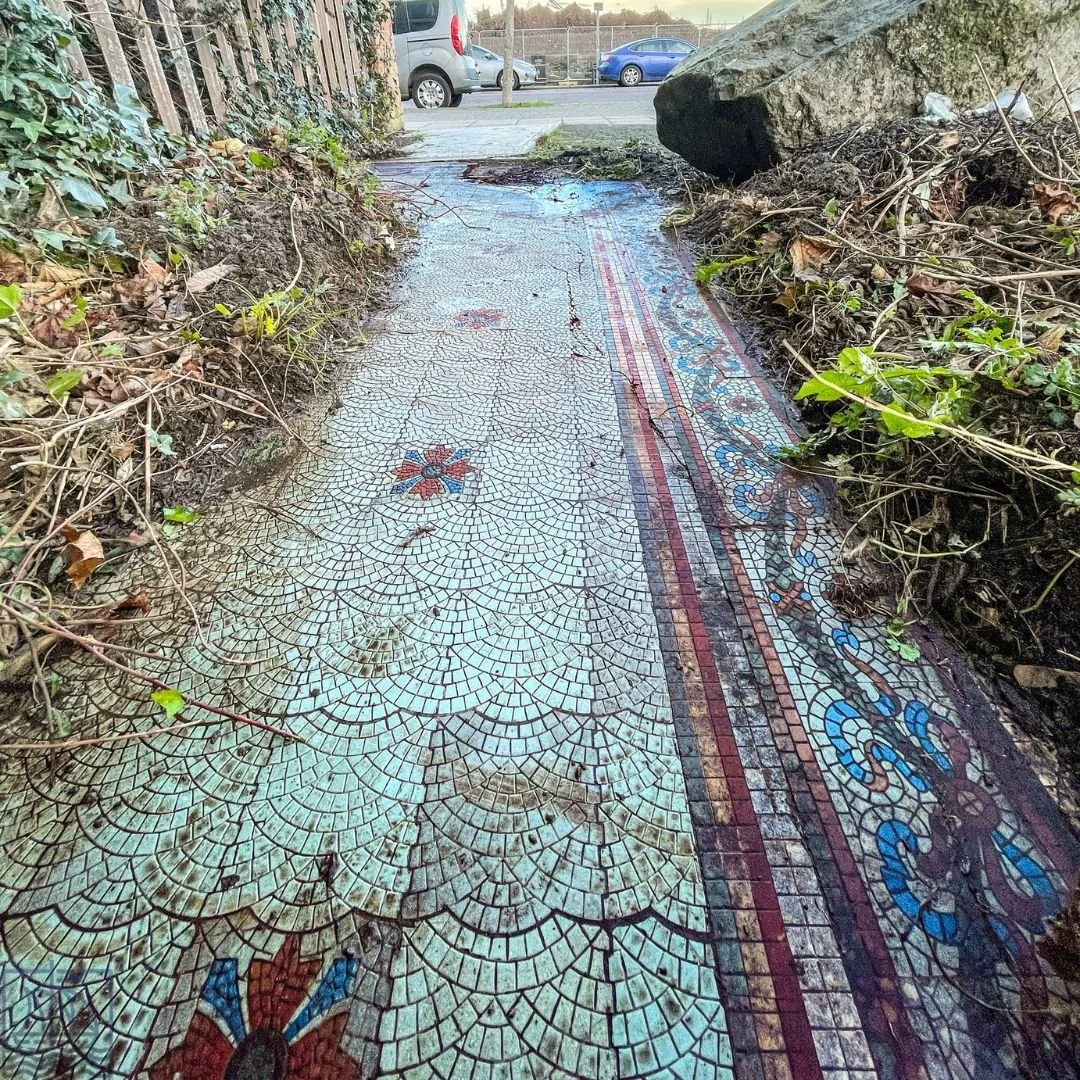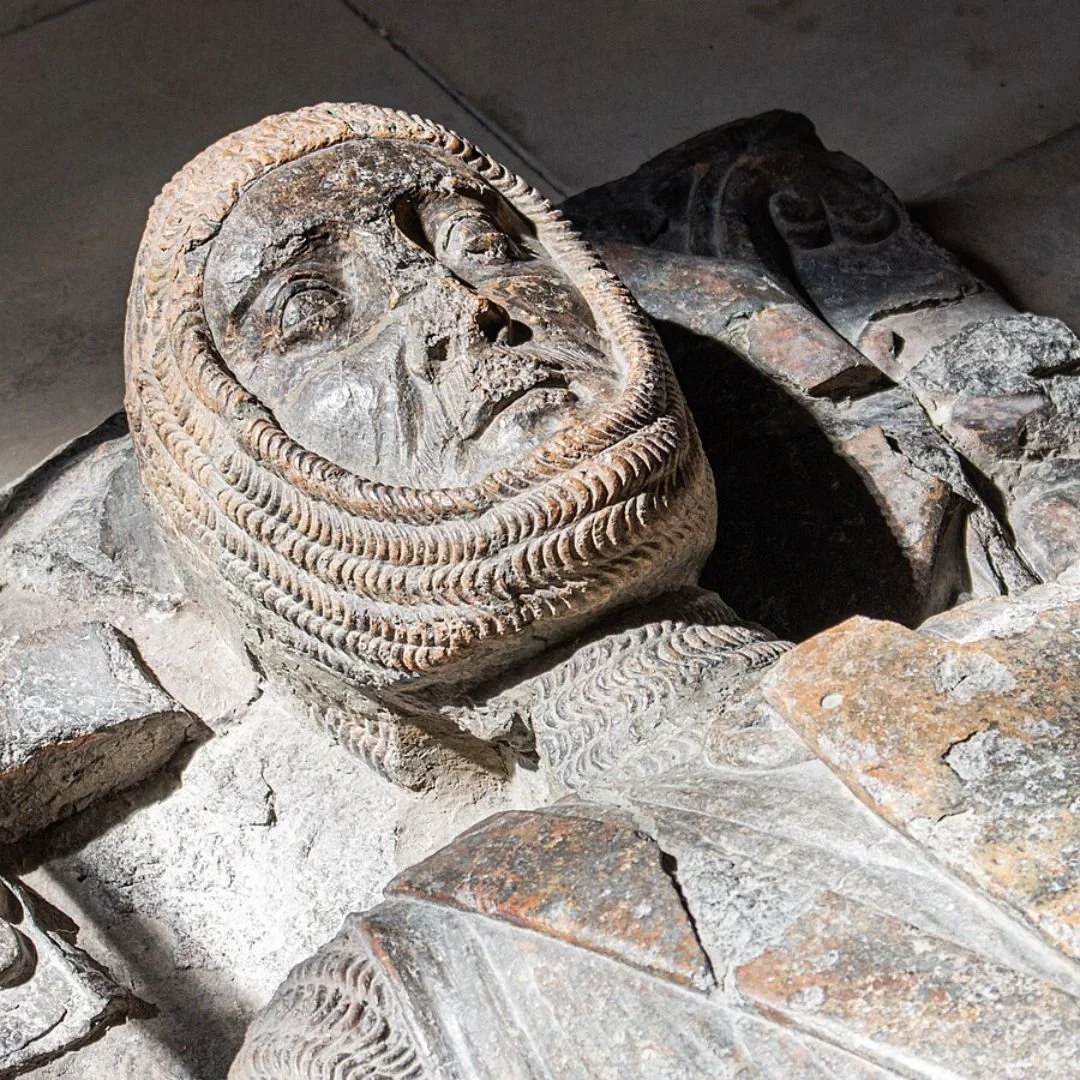Ancient Chapel Discovered Under House In Shropshire
In 2010, a family discovered a hidden ancient chapel under their house in Shropshire.
Indulging in a few drinks and fuelled by curiosity, an unexpected discovery unfolded beneath the floors of a family's residence: a concealed chapel.
During a gathering to mark Good Friday, the Farla family, residing in Telford, Shropshire, decided to investigate a mysterious metal grid within their Victorian home.
For the past three years, Pat, 52, and Diane Farla, 43, had pondered the secrets behind the metre-long fixture nestled alongside a wall.
Upon removing it, they revealed a crevice just spacious enough for Gareth Farla, 20, and his uncle Matthew Lathan, 25, to navigate.
Emerging into the dimness beyond, they stumbled upon a compact cellar, its ambiance reminiscent of a chapel, cloaked in an eerie atmosphere.
At the heart of the room was a weathered wooden cross, toppled from decay.
Speaking to the Daily Mail, Matthew recounted, "We stumbled upon it amidst our drunken antics, deciding to peek beneath the grid. It was truly remarkable. Excitement rippled through everyone."
Venturing further into the basement, they encountered an ancient chest, brimming with relics of the past—aged newspapers and bottles dating back to the 1930s.
Suspended from the ceiling, hooks hinted at a bygone era of meat preservation.
A damp mesh or cloth draped across one end of the cellar, while brick seats lined the walls, evoking a church-like aura.
The revelations didn't cease; soon, a set of stairs at the rear of the basement caught someone's eye, beckoning further exploration.
Continuing with the Daily Mail, Gareth added: 'When we spotted the stairs in the room we tried to find out where they led to.
'There was more cardboard and we broke through that and it came out to a cupboard in our dining room.
'It's strange it's been there and we had no idea. We were just storing the hoover and blankets, we couldn't quite believe it.
'At that point everyone else came in and saw it.
'We're not sure what the room was used for, but the crosses and layout suggest it might have been a chapel.
'We didn't like to touch the stuff too much as we would like someone to come and tell us what it is.'
The family intends to reach out to local history groups in hopes of unraveling the mysteries surrounding their discovery.
According to the Farlas, the deeds of their detached house trace back 230 years, suggesting it may have served as a pub at some point.
Richard Westwood Brookes, a historical documents expert, speculated, "If the deeds are over 230 years old and the room dates back to the 1700s, there's a possibility it could have been used as a hideaway for Catholics or other nonconformist religious groups."
He continued, "During that era, being Catholic was perilous, often leading to persecution and execution.
”It's plausible that such a room could have functioned as a clandestine Catholic church or a priest hole, but its purpose hinges on its age."
Brookes added that if the structure originated during World War II, it might have served as a type of bunker.
Winston Churchhill had a secret army of hand-picked men who stayed behind and would launch a sabotage operation in case the Nazis won the war and ruled Britain.
They often stayed in underground bunkers similar to these.
They were treated as cowards because they stayed behind, when in fact they were the bravest of the brave - because if Hitler would have won, their life expectancy would have been about three weeks because locals would have ousted them to keep the peace with the Nazis.
Underground bunkers in WW2
These subterranean fortifications ultimately served as command centres, offering protection from aerial bombardment and facilitating strategic planning during the tumultuous years of conflict.
Churchill, recognising the importance of secure and fortified locations, advocated for the construction of numerous underground bunkers throughout the United Kingdom.
These bunkers were equipped with communication systems, maps, and operational facilities, enabling military leaders to coordinate defence efforts effectively.
One of the most famous bunkers associated with Churchill is the Cabinet War Rooms in London.
This underground complex served as the nerve centre of Britain's war effort, where Churchill and his cabinet conducted meetings and made critical decisions throughout the war.
Additionally, various other bunkers were constructed across the country, ranging from regional command centres to air raid shelters for civilians.
These bunkers played a vital role in safeguarding lives and maintaining morale during the darkest days of the war.
Churchill's emphasis on underground defenses reflected his commitment to ensuring the resilience and preparedness of the nation in the face of adversity.
Today, the famous ‘Churchill bunker’ in London is now a famous tourist attraction.
If you enjoyed this blog post, please follow Exploring GB on Facebook for daily travel content and inspiration.
Don’t forget to check out our latest blog post below!
Thank you for visiting Exploring GB.




















